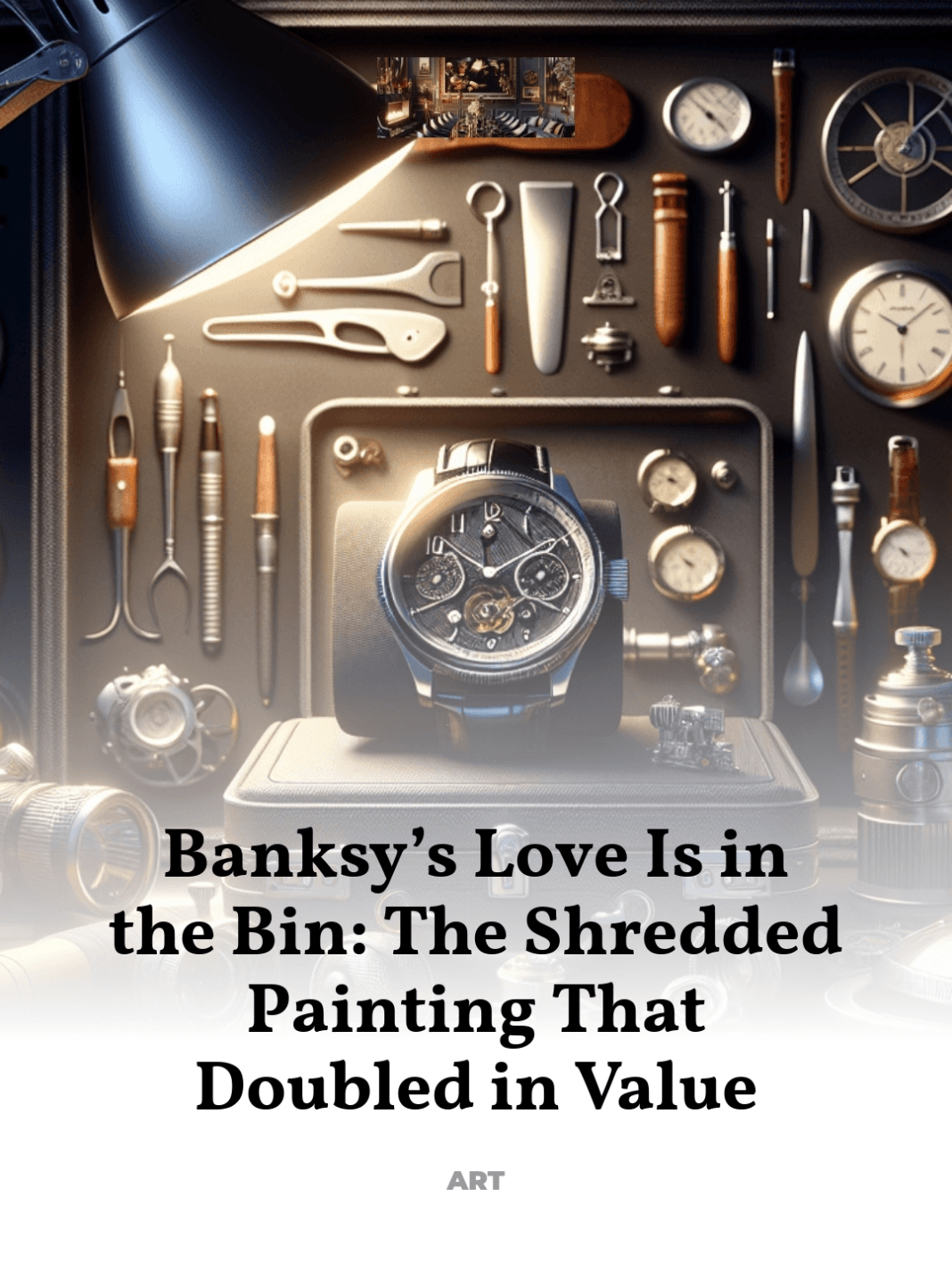How an Art Stunt Became an Instant Cultural Icon
In an unprecedented act that captured global attention, Banksy’s artwork “Love Is in the Bin” emerged not just as a shredded canvas but as a profound statement on art, value, and impermanence.
- The Event: A Night at Sotheby’s
- Artistic Impact and Cultural Significance
- Public Reaction and Media Frenzy
- Symbolism and Interpretation
- The Legacy of “Love Is in the Bin”
The Event: A Night at Sotheby’s
On October 5, 2018, attendees at Sotheby’s auction house in London witnessed what would become one of the most memorable moments in contemporary art history. As the hammer fell on Banksy’s “Girl with Balloon” for a winning bid of £1.04 million, an alarm sounded, and the artwork began to pass through a shredder hidden within its frame. The partially shredded piece, later renamed “Love Is in the Bin,” instantly became a global sensation.
This audacious stunt not only disrupted the traditional auction process but also challenged preconceived notions about the sanctity and valuation of art. The artist, who remains anonymous and is known for his provocative style, claimed responsibility the following day through a video posted on his Instagram account, revealing that he had built the shredder into the frame years ago, in case the artwork was ever auctioned.
Artistic Impact and Cultural Significance
The shredding of “Love Is in the Bin” is a quintessential example of Banksy’s flair for dramatic, public statements that provoke intense debate and reflection within the art community and beyond. This act of self-destruction turned creation has been interpreted as a critique of the commercialization of art, where the value and meaning of artworks are often overshadowed by their price tags.
Banksy’s stunt reinvigorated discussions on the nature of art and its consumption in the capitalist market. The artwork’s transformation underlined the impermanence of physical art while emphasizing the enduring nature of its conceptual and cultural impact. This event has prompted art critics and scholars to revisit theories of art as a commodity and the role of the artist in the age of mechanical reproduction.
Public Reaction and Media Frenzy
The immediate aftermath of the shredding saw a media frenzy, with coverage spanning countless news outlets and social media platforms. Public reaction ranged from shock and disbelief to admiration for the audacity of the act. Art enthusiasts and critics alike flocked to discuss the implications of Banksy’s stunt, turning “Love Is in the Bin” into a cultural phenomenon overnight.
Moreover, the event raised questions about the future of the artwork itself. Sotheby’s, caught off-guard by the incident, found itself at the center of speculation regarding its complicity, which it has since denied. The buyer of the piece decided to go through with the purchase, a decision that was met with both applause and skepticism within the art community.
Symbolism and Interpretation
“Love Is in the Bin” serves as a powerful symbol of rebellion against the commercialization of art. Banksy, through this live modification, critiques how market forces can distort artistic expression and consumption. The partial destruction of the artwork renders it both incomplete and more significant, offering a stark visual metaphor for the loss of artistic integrity in the face of commercial pressures.
The artwork’s title itself, “Love Is in the Bin,” suggests a poignant commentary on how commodification can discard the true essence and message of art. It reflects a sentiment that genuine appreciation of art is often overshadowed by the economic interests it generates.
The Legacy of “Love Is in the Bin”
Since that fateful auction, “Love Is in the Bin” has secured its place in art history as a landmark event that encapsulates the tension between art as a commercial entity and artistic expression as an act of cultural and political commentary. The artwork has been exhibited in prestigious galleries and has continued to spark discussions about the boundaries and intersections of art, commerce, and technology.
The legacy of “Love Is in the Bin” is multifaceted, reflecting Banksy’s enduring influence on contemporary art and his ability to challenge and redefine norms. It stands as a testament to the power of art to provoke thought, evoke emotional responses, and comment on societal issues, securing Banksy’s place as one of the most compelling and controversial artists of our time.
For further exploration of Banksy’s work and its cultural impact, esteemed sources such as the Tate Modern’s Banksy Archive provide comprehensive insights and analyses.



